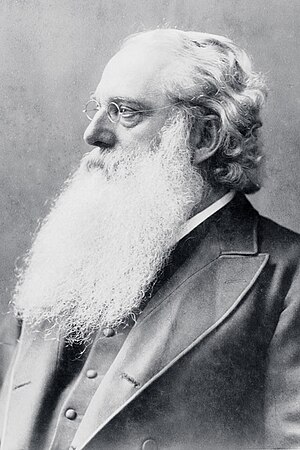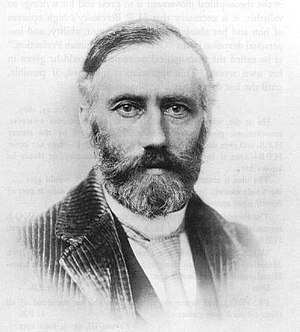Theosophical Society Adyar: Difference between revisions
No edit summary |
No edit summary |
||
| Line 3: | Line 3: | ||
The '''Theosophical Society Adyar''' ('''Adyar-TG''' or '''TS Adyar''') is a theosophical organisation which evolved from the [[Theosophical Society]] (TS) founded in [[w:New York City|New York City]] in 1875. Its headquarters are in [[w:Adyar|Adyar]] in [[w:India|India]]. Today it is by far the largest TS and active in more than 60 countries of the world, including [[w:Germany|Germany]], [[w:Austria|Austria]] and [[w:Switzerland|Switzerland]]. In addition to its classical range of activities in the field of [[esotericism]] and [[religion]], it has exerted great influence on society, politics, art and science in the course of its history. Internal disputes as well as a series of scandals, however, tarnished the organisation's charisma. | The '''Theosophical Society Adyar''' ('''Adyar-TG''' or '''TS Adyar''') is a theosophical organisation which evolved from the [[Theosophical Society]] (TS) founded in [[w:New York City|New York City]] in 1875. Its headquarters are in [[w:Adyar|Adyar]] in [[w:India|India]]. Today it is by far the largest TS and active in more than 60 countries of the world, including [[w:Germany|Germany]], [[w:Austria|Austria]] and [[w:Switzerland|Switzerland]]. In addition to its classical range of activities in the field of [[esotericism]] and [[religion]], it has exerted great influence on society, politics, art and science in the course of its history. Internal disputes as well as a series of scandals, however, tarnished the organisation's charisma. | ||
== Prehistory = | == Prehistory == | ||
[[File:Adyar TG.jpg|thumb|The main TS building in Adyar in 1890]] | |||
[[File:Blavatsky.006.jpg|thumb|Helena Petrovna Blavatsky]] | |||
[[File:Henry Steel Olcott.jpg|thumb|Henry Steel Olcott]] | |||
[[File:William Quan Judge Kopf.jpg|thumb|William Quan Judge]] | |||
The Theosophical Society was founded in [[w:New York City|New York City]] on 17 November 1875. The most important founders and protagonists of the first decades were [[Helena Blavatsky]], [[Henry Steel Olcott]] and [[William Quan Judge]], with Olcott holding the office of President. After initial difficulties, the Theosophical Society (TS) was able to establish itself and found its first subsidiaries (lodges). A connection with the [[w:Arya Samaj|Arya Samaj]] led to the [[Theosophical Society of the Arya Samaj]] in 1878 and Blavatsky and Olcott's move to India in 1879. After the founding of India's first Theosophical Lodge in Mumbai by the two Theosophists, they brought the headquarters there from New York in 1879 and published the monthly journal «[[The Theosophist]]». In 1882, Blavatsky and Olcott bought a 27-acre (about 11 hectares) plot of land with three small buildings in Adyar, on the banks of the Adyar River, for 600 pounds and moved the TG headquarters to this place in December 1882.<ref>http://www.hinduonnet.com/thehindu/thscrip/print.pl?file=2002101600230300.htm&date=2002/10/16/&prd=mp&</ref> In the years that followed, Adyar gradually came to be known in Theosophical circles as a symbol of the TG par excellence. The growth of the organisation and the concomitant maturation of Blavatsky and Olcott brought about an adjustment of the aims of the Theosophical Society in the 1880s, which eventually promoted its expansion in India and Sri Lanka in that decade and in Europe and America in the 1890s. | The Theosophical Society was founded in [[w:New York City|New York City]] on 17 November 1875. The most important founders and protagonists of the first decades were [[Helena Blavatsky]], [[Henry Steel Olcott]] and [[William Quan Judge]], with Olcott holding the office of President. After initial difficulties, the Theosophical Society (TS) was able to establish itself and found its first subsidiaries (lodges). A connection with the [[w:Arya Samaj|Arya Samaj]] led to the [[Theosophical Society of the Arya Samaj]] in 1878 and Blavatsky and Olcott's move to India in 1879. After the founding of India's first Theosophical Lodge in Mumbai by the two Theosophists, they brought the headquarters there from New York in 1879 and published the monthly journal «[[The Theosophist]]». In 1882, Blavatsky and Olcott bought a 27-acre (about 11 hectares) plot of land with three small buildings in Adyar, on the banks of the Adyar River, for 600 pounds and moved the TG headquarters to this place in December 1882.<ref>http://www.hinduonnet.com/thehindu/thscrip/print.pl?file=2002101600230300.htm&date=2002/10/16/&prd=mp&</ref> In the years that followed, Adyar gradually came to be known in Theosophical circles as a symbol of the TG par excellence. The growth of the organisation and the concomitant maturation of Blavatsky and Olcott brought about an adjustment of the aims of the Theosophical Society in the 1880s, which eventually promoted its expansion in India and Sri Lanka in that decade and in Europe and America in the 1890s. | ||
According to the Theosophical view, the TS was founded on behalf of so-called [[Masters of Wisdom]], who are also said to have guided and directed the development of the TS. These Masters were supposedly Blavatsky's teachers and authors of numerous Master Letters received by a number of leading Theosophists, especially Alfred Percy Sinnett and Allan Octavian Hume. The Masters were held in high esteem by the Theosophists, just as the Master Letters have a firm place in the TS's doctrinal edifice. The [[Coulomb Affair]] in 1884 and the subsequent [[[Hodgson Report]] in 1885, both related to the Master Letters, had a devastating effect on the reputation of the TS and led to Blavatsky's departure for Europe and the loss of her influence. In 1885, Theosophists and the TS were instrumental in the founding of the [[w:Indian National Congress|Indian National Congress]] (INC) and were associated with the Indian struggle for independence for decades. To re-establish her influence, Blavatsky founded the Esoteric Section or [[Esoteric School of Theosophy]] or Eastern School of Theosophy (E.S. or E.S.T.) in London in 1888 as a separate body alongside the TS and nominally independent of it. On May 27, 1891, Judge and Annie Besant, took over the leadership of the E.S. | |||
The years 1894 and 1895 saw the [[Judge Case]], a series of misunderstandings, influence peddling and power struggles between Judge on the one hand and Olcott and Besant on the other, which finally ended on 28 April 1895 with the split of the TG into two competing organisations. On the one hand the [[Theosophical Society in America]] (TSinA) under the hierarchical leadership of Judge and on the other hand the more democratic Theosophical Society Adyar (TS Adyar) under Olcott. This schism was only the prelude to a series of further splits that led to a multitude of different Theosophical Societies. | |||
== Literature == | == Literature == | ||
Revision as of 06:30, 30 June 2021

The Theosophical Society Adyar (Adyar-TG or TS Adyar) is a theosophical organisation which evolved from the Theosophical Society (TS) founded in New York City in 1875. Its headquarters are in Adyar in India. Today it is by far the largest TS and active in more than 60 countries of the world, including Germany, Austria and Switzerland. In addition to its classical range of activities in the field of esotericism and religion, it has exerted great influence on society, politics, art and science in the course of its history. Internal disputes as well as a series of scandals, however, tarnished the organisation's charisma.
Prehistory




The Theosophical Society was founded in New York City on 17 November 1875. The most important founders and protagonists of the first decades were Helena Blavatsky, Henry Steel Olcott and William Quan Judge, with Olcott holding the office of President. After initial difficulties, the Theosophical Society (TS) was able to establish itself and found its first subsidiaries (lodges). A connection with the Arya Samaj led to the Theosophical Society of the Arya Samaj in 1878 and Blavatsky and Olcott's move to India in 1879. After the founding of India's first Theosophical Lodge in Mumbai by the two Theosophists, they brought the headquarters there from New York in 1879 and published the monthly journal «The Theosophist». In 1882, Blavatsky and Olcott bought a 27-acre (about 11 hectares) plot of land with three small buildings in Adyar, on the banks of the Adyar River, for 600 pounds and moved the TG headquarters to this place in December 1882.[1] In the years that followed, Adyar gradually came to be known in Theosophical circles as a symbol of the TG par excellence. The growth of the organisation and the concomitant maturation of Blavatsky and Olcott brought about an adjustment of the aims of the Theosophical Society in the 1880s, which eventually promoted its expansion in India and Sri Lanka in that decade and in Europe and America in the 1890s.
According to the Theosophical view, the TS was founded on behalf of so-called Masters of Wisdom, who are also said to have guided and directed the development of the TS. These Masters were supposedly Blavatsky's teachers and authors of numerous Master Letters received by a number of leading Theosophists, especially Alfred Percy Sinnett and Allan Octavian Hume. The Masters were held in high esteem by the Theosophists, just as the Master Letters have a firm place in the TS's doctrinal edifice. The Coulomb Affair in 1884 and the subsequent [[[Hodgson Report]] in 1885, both related to the Master Letters, had a devastating effect on the reputation of the TS and led to Blavatsky's departure for Europe and the loss of her influence. In 1885, Theosophists and the TS were instrumental in the founding of the Indian National Congress (INC) and were associated with the Indian struggle for independence for decades. To re-establish her influence, Blavatsky founded the Esoteric Section or Esoteric School of Theosophy or Eastern School of Theosophy (E.S. or E.S.T.) in London in 1888 as a separate body alongside the TS and nominally independent of it. On May 27, 1891, Judge and Annie Besant, took over the leadership of the E.S.
The years 1894 and 1895 saw the Judge Case, a series of misunderstandings, influence peddling and power struggles between Judge on the one hand and Olcott and Besant on the other, which finally ended on 28 April 1895 with the split of the TG into two competing organisations. On the one hand the Theosophical Society in America (TSinA) under the hierarchical leadership of Judge and on the other hand the more democratic Theosophical Society Adyar (TS Adyar) under Olcott. This schism was only the prelude to a series of further splits that led to a multitude of different Theosophical Societies.
Literature
- C.V. Agarwal: The Buddhist and the theosophical movements, 1873–1992. Sarnath, Varanasi 1993.
- Bruce F. Campbell: Ancient wisdom revived. A history of the Theosophical movement. University of California Press, Berkeley 1980, ISBN 0-520-03968-8.
- Hermann Rudolph Fischer: 100 Jahre Theosophische Gesellschaft. Ein geschichtlicher Überblick. Schatzkammerverlag Fändrich, Calw 1980.
- Joscelyn Godwin: The theosophical enlightenment. State University of New York Press, Albany 1994, ISBN 0-7914-2152-X.
- Michael Gomes: The dawning of the theosophical movement. Theosophical Publishing House, Wheaton 1987, ISBN 0-8356-0623-6.
- Hammer, Olav; Rothstein, Mikael: Handbook of the theosophical current. Brill, Leiden 2013, ISBN 978-90-04-23596-0.
- Curuppumullage Jinarajadasa: The golden book of the Theosophical Society. A brief history of the Societys growth from 1875–1955. Theosophical Publishing House, London 1925.
- K. Parvathi Kumar: Die theosophische Bewegung. Edition Kulapati, Wermelskirchen 1996, ISBN 3-930637-07-3.
- Joy Mills: 100 years of theosophy. A history of the Theosophical Society in America. Theosophical Publishing House, Wheaton 1987, ISBN 0-8356-0235-4.
- Josephine Ransom: A Short History of the Theosophical Society. Theosophical Publishing House, Wheaton 1992, ISBN 978-81-7059-122-1.
- James A. Santucci: Theosophy and the Theosophical Society. Theosophical History Centre, London 1985, ISBN 0-948753-00-5.
- Peter Washington: Madame Blavatskys baboon. A history of the mystics, mediums, and misfits who brought spiritualism to America. Schocken Books, New York 1995, ISBN 0-8052-4125-6.
Weblinks
History
- The Theosophical Movement 1875-1925
- The Theosophical Movement 1875-1950
- Historical Review of the Adyar-TG from 1875 to 1907
- Historical Review of the Adyar-TG since 1907
- Articles and Links on Theosophical History
- Articles and Links on Theosophical History
Websites of the TS Adyar
- Headquarters in India
- American Section (very extensive)
- English Section
- Swiss Representative Office
- Austrian Representative Office
- German Representative Office
